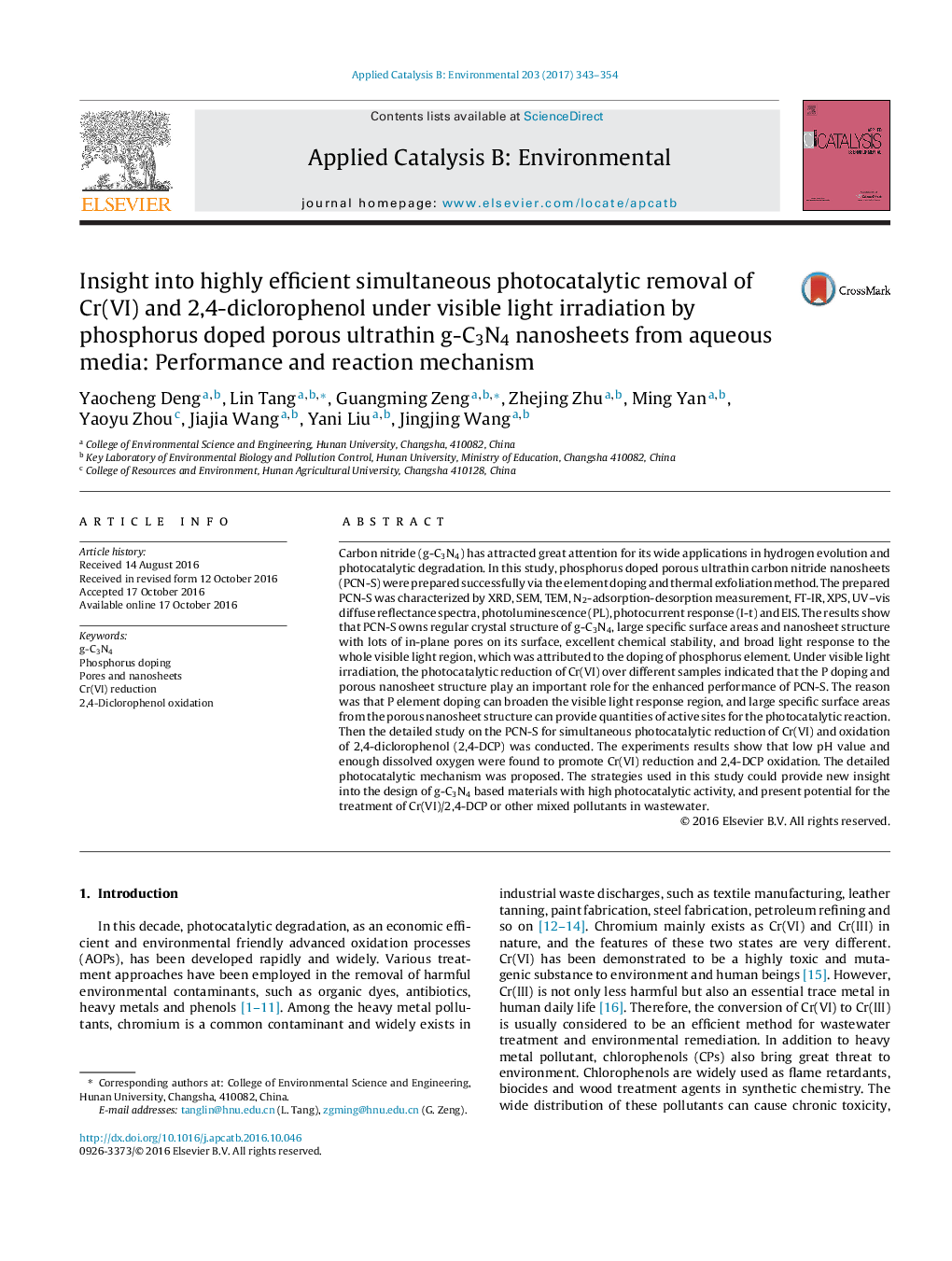| کد مقاله | کد نشریه | سال انتشار | مقاله انگلیسی | نسخه تمام متن |
|---|---|---|---|---|
| 6454470 | 1418817 | 2017 | 12 صفحه PDF | دانلود رایگان |

- Phosphorus doped porous ultrathin g-C3N4 nanosheets (PCN-S) was prepared successfully.
- P doping can greatly broaden the visible light response region of PCN-S.
- Porous and ultrathin structure can increase the specific surface area of PCN-S.
- PCN-S presents enhanced redox ability for the simultaneous removal of Cr(VI) and 2,4-DCP.
- The synergistic effect of Cr(VI) and 2,4-DCP has been systematic studied.
Carbon nitride (g-C3N4) has attracted great attention for its wide applications in hydrogen evolution and photocatalytic degradation. In this study, phosphorus doped porous ultrathin carbon nitride nanosheets (PCN-S) were prepared successfully via the element doping and thermal exfoliation method. The prepared PCN-S was characterized by XRD, SEM, TEM, N2-adsorption-desorption measurement, FT-IR, XPS, UV-vis diffuse reflectance spectra, photoluminescence (PL), photocurrent response (I-t) and EIS. The results show that PCN-S owns regular crystal structure of g-C3N4, large specific surface areas and nanosheet structure with lots of in-plane pores on its surface, excellent chemical stability, and broad light response to the whole visible light region, which was attributed to the doping of phosphorus element. Under visible light irradiation, the photocatalytic reduction of Cr(VI) over different samples indicated that the P doping and porous nanosheet structure play an important role for the enhanced performance of PCN-S. The reason was that P element doping can broaden the visible light response region, and large specific surface areas from the porous nanosheet structure can provide quantities of active sites for the photocatalytic reaction. Then the detailed study on the PCN-S for simultaneous photocatalytic reduction of Cr(VI) and oxidation of 2,4-diclorophenol (2,4-DCP) was conducted. The experiments results show that low pH value and enough dissolved oxygen were found to promote Cr(VI) reduction and 2,4-DCP oxidation. The detailed photocatalytic mechanism was proposed. The strategies used in this study could provide new insight into the design of g-C3N4 based materials with high photocatalytic activity, and present potential for the treatment of Cr(VI)/2,4-DCP or other mixed pollutants in wastewater.
201
Journal: Applied Catalysis B: Environmental - Volume 203, April 2017, Pages 343-354